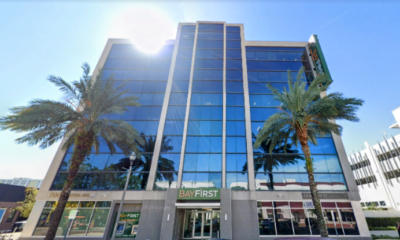Thrive
Phosphate and Florida: An environmental quagmire

On April 6, Manatee County officials lifted a five-day evacuation order for residents and businesses located near the Piney Point phosphate plant site, as fears of catastrophic flooding from a breach in an elevated wastewater storage pond receded.
The same day, Manatee County’s Board of Commissioners unanimously authorized the construction of a deep injection well at the site that may offer a long-term solution to the problem of waste disposal that has plagued the site for decades. But not everybody is convinced.
The history of phosphate in Florida runs deep. In the 1880s, surveyors discovered a treasure trove of prehistoric fossils buried in ancient sandbars along the Peace River, in what would come to be known as Florida’s Bone Valley. This area proved extraordinarily rich in phosphate, a vital component in modern fertilizers, and would become the center of a booming Florida industry, which now provides an estimated one quarter of the world’s phosphate supply.
According to the Florida Department of Environmental Protection, there are currently 27 mines in the state, covering an estimated 450,000 acres. Of these 27 mines, nine are active, nine have closed and undergone a full environmental reclamation process, and nine – like the Piney Point plant site – are somewhere in between.
The situation unfolding at Piney Point gives Floridians a lens for examining what it means to live so closely with an industry that has both considerable economic importance and a substantial environmental footprint. Like all phosphate production sites, Piney Point has faced the problem of what to do with the byproducts of the production process. There have been some interesting proposals over the years, such as turning waste into road construction material, or creating artificial reefs out of it, but waste materials have generally been deemed too toxic for commercial uses.
RELATED STORY: Piney Point incident could still be ‘catastrophic’ for manatees
For decades, waste has been stored in enormous, hill-like phosphogypsum stacks (“gyp stacks”) and elevated settling ponds which are vulnerable to breaches, overflows, and, as we learned in 2016, that most terrifying of all Florida hazards – sinkholes.
In 2003, heavy rainfall from Tropical Storm Gabrielle threatened to burst the dikes of a Piney Point storage pond, and the Florida Department of Environmental Protection authorized an emergency discharge of 10 million gallons of partially treated wastewater into Tampa Bay. Piney Point continued to use this method to manage overflows until 2004, and as a result, The Bradenton Times notes, a cumulative total of 1.1. billion gallons of wastewater ended up in nearby Bishop Harbor.
Piney Point’s problems have been exacerbated by decades of financial complications that have left the current owner of the site, HRK Holdings, unable or unwilling to fully comply with orders to clean up the site, or to develop a long-term strategy for waste storage.
The plan now emerging from Manatee County’s Board of Commissioners looks like it could offer a permanent solution. It centers around the construction (likely funded by federal stimulus money) of a 2,000 to 3,000-foot deep injection well, into which treated wastewater would be placed and allowed to filter, very gradually, into Tampa Bay. Commission Chair Vanessa Baugh, who was initially skeptical of the idea, noted that the “added protection for our aquifer” provided by cleaning the water before it enters the well won her over to the concept.
Florida Department of Environmental Protection Secretary Noah Valenstein was also optimistic, raising the hope that the deep injection well might be the “last chapter” in a long story of unresolved environmental problems at Piney Point. It is also significant that this new chapter brings a change in who will manage environmental remediation at Piney Point, with a “unified command” of officials from the Florida Department of Emergency Management, the Department of Environmental Protection, and Manatee Public Safety replacing the leadership of property owner HRK Holdings and third-party engineers.
But constructing the well will take months, and in the meantime, there is the problem of the remaining wastewater in the damaged pond. Officials are planning to divert water to other locations onsite, to Mosaic-owned facilities elsewhere in Florida, and perhaps even to deep injection wells along the Louisiana coast.
There is also the issue, of course, of the wastewater already pumped into Tampa Bay — to the tune of 30 million gallons each day — as the crisis has unfolded. In a recent interview with WUSF, Maya Burke, assistant director of the Tampa Bay Estuary Program, drew the link between these nutrient-rich infusions and the potential for algal blooms that shade out sea grasses, destroying habitat that is crucial in supporting local fisheries. Water quality testing will need to continue at the site for some time to determine the full impact of the incident.
And some prominent officials, including Florida’s Commissioner for Agriculture and Consumer Services Nikki Fried, remain unconvinced about the viability of the new plan. “We’ve got to protect our Everglades, we’ve got to protect our aquifers, and I have said in the past that I have huge concerns with deep well injections, especially with doing it so close to the Everglades,” Fried said on April 6.
The environmental impact of phosphate production is an issue that affects all Floridians; we are connected to the question of how we produce and use fertilizer in agriculture.
Now that’s food for thought.







